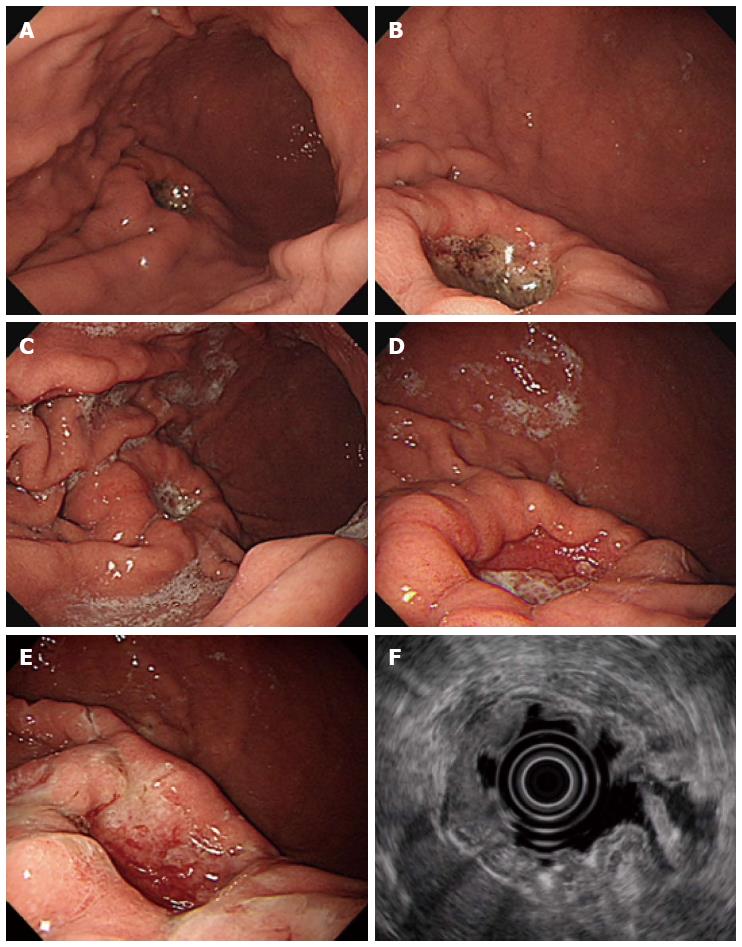Copyright
©2014 Baishideng Publishing Group Inc.
World J Gastroenterol. Jul 28, 2014; 20(28): 9621-9625
Published online Jul 28, 2014. doi: 10.3748/wjg.v20.i28.9621
Published online Jul 28, 2014. doi: 10.3748/wjg.v20.i28.9621
Figure 1 Esophagogastroduodenoscopy and endoscopic ultrasonography findings.
A, B: Initial esophagogastroduodenoscopy (EGD) finding. A 2 cm x 2 cm-sized, deep round ulcer, with an elevated thick and fused mucosal fold at the greater curvature side of the lower body; C, D: EGD finding three weeks later. The gastric ulcer was still noted, without discernible change. Some regenerating tissue was found at the ulcer base; E, F: EGD and ultrasonography (EUS) findings three months later. EGD still showed a large ulcer that had not grossly changed since the last EGD. On EUS, the mucosal, submucosal and muscular layer of the stomach were involved in the ulcerative lesion, and the serosa was focally abutted.
- Citation: Hur J, Chang JH, Kim BK, Ko HY, Lee JH, Kim SJ, Song MA, Kim TH, Kim CW, Han SW. Undiagnosed Borrmann type II gastric cancer due to necrosis and regenerative epithelium. World J Gastroenterol 2014; 20(28): 9621-9625
- URL: https://www.wjgnet.com/1007-9327/full/v20/i28/9621.htm
- DOI: https://dx.doi.org/10.3748/wjg.v20.i28.9621









